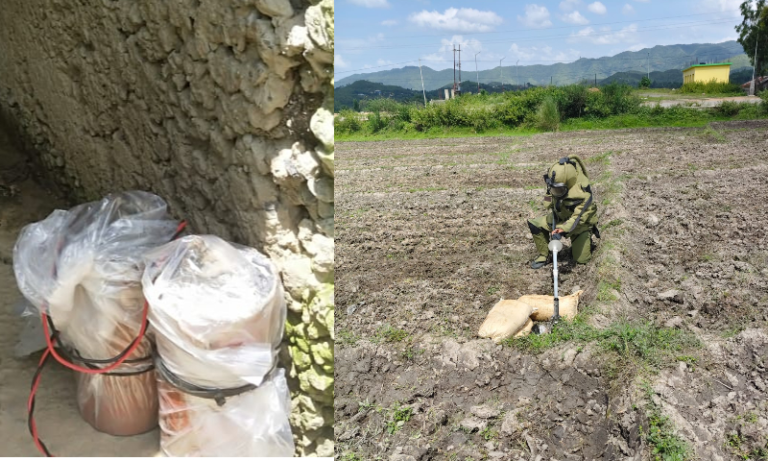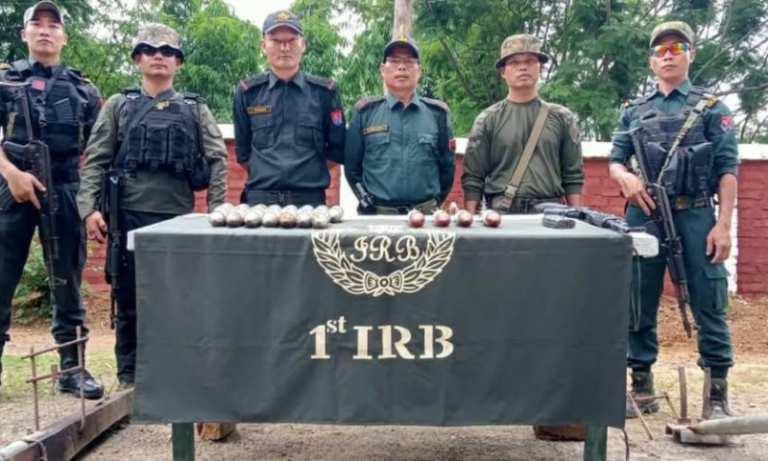Manipur: Assam Rifles Vacate Camp Destroyed by Mob in Kamjong District
Summary
In a significant development from Manipur, the Assam Rifles have vacated a camp in Kamjong district that was destroyed by a mob. The incident occurred amid growing tensions and allegations against the force. While details remain unclear, this event highlights the fragile situation in the region, with authorities striving to maintain order and rebuild trust among communities.
Introduction: What Happened in Kamjong District?
Tensions in Manipur took another dramatic turn when a mob attacked an Assam Rifles camp in Kamjong district, leading to its destruction. Following the incident, the personnel stationed there vacated the site. But what led to this shocking event? And what does it mean for the already strained relations between security forces and local communities in the region? Let’s delve into the unfolding story.
Understanding the Context: Manipur’s Volatile Landscape
Manipur, a state with a rich cultural tapestry, has often found itself at the crossroads of conflict. From inter-tribal disputes to allegations of heavy-handedness by security forces, the challenges here are as complex as they are deep-rooted.
In recent months, these tensions have escalated, with clashes, road blockades, and growing mistrust adding fuel to the fire. The destruction of the Assam Rifles camp in Kamjong district is not an isolated incident—it’s part of a larger narrative of unrest.
The Assam Rifles: A Pillar of Security in the Northeast
The Assam Rifles, often referred to as the “Sentinels of the Northeast,” play a crucial role in maintaining peace in this sensitive region. Their responsibilities range from combating insurgency to aiding in disaster relief.
However, their presence is not without controversy. Allegations of bias, excessive use of force, and strained relations with local communities have occasionally tarnished their image. The recent mob attack is a stark reminder of the fragile trust between the force and the people they are meant to protect.
What Led to the Attack on the Camp?
While the specific triggers for the mob attack remain under investigation, here are some possible factors:
- Alleged Partiality:
There have been accusations against security forces of siding with certain groups in ongoing inter-community conflicts. Whether these claims hold water or not, they have certainly fueled anger among local communities. - Lack of Communication:
Often, a lack of transparent communication between security forces and civilians leads to misunderstandings and, eventually, hostility. - Growing Frustrations:
For communities already dealing with socio-economic hardships and a volatile security situation, even minor incidents can act as the spark for larger unrest.
The Aftermath of the Attack
Once the camp was destroyed, the Assam Rifles personnel vacated the site. This decision has raised questions about the security vacuum it might create in Kamjong district. With the camp gone, who will ensure peace in the area? And how will this impact the already fragile state of affairs in Manipur?
Local leaders and community organizations have expressed concerns over the potential consequences. While some see the withdrawal as a tactical move to de-escalate tensions, others view it as a sign of growing instability.
Why Dialogue is Key to Resolving the Crisis
Let’s be honest—violence only begets more violence. The attack on the camp is a symptom of deeper issues that can’t be resolved through force alone. Dialogue is the need of the hour.
Steps Toward Resolution:
- Building Trust:
Security forces need to actively engage with local communities to rebuild trust. Regular interaction, transparency, and accountability are critical. - Addressing Grievances:
Whether the allegations against the Assam Rifles are true or not, the concerns of the local population must be addressed. Ignoring them will only lead to more incidents like this. - Involving Local Leadership:
Tribal leaders, community elders, and civil society organizations can act as mediators, ensuring that all voices are heard in the resolution process. - Ensuring Fairness:
Any actions taken must be seen as impartial. Whether it’s investigations or redeployment of forces, transparency is key.
The Bigger Picture: What This Means for Manipur
Manipur’s challenges are not unique. Across the world, regions with diverse communities often struggle to find balance. But here’s the thing—every conflict offers an opportunity to do better.
The attack on the Assam Rifles camp is a wake-up call for all stakeholders. It’s a chance to address long-standing grievances, improve relations, and create a roadmap for lasting peace.
Conclusion: Moving Forward Together
The destruction of the Assam Rifles camp in Kamjong district is a stark reminder of the challenges facing Manipur. But it’s also an opportunity—a chance for dialogue, understanding, and resolution.
By working together—security forces, local communities, and authorities—Manipur can overcome these hurdles. After all, the goal is the same for everyone: peace, progress, and a better future for all.
FAQs
- What triggered the mob attack on the Assam Rifles camp in Kamjong?
While investigations are ongoing, it appears to be linked to allegations of bias and growing tensions in the region. - Why did the Assam Rifles vacate the camp?
The decision to vacate was likely made to de-escalate tensions and prevent further violence. - What are the potential consequences of the camp’s destruction?
The absence of the camp could create a security vacuum, raising concerns about increased instability in the area. - How can the trust between security forces and local communities be rebuilt?
Through transparent communication, addressing grievances, and involving local leaders in the resolution process. - What role does the government play in resolving such conflicts?
The government must act as a neutral mediator, ensure fairness, and provide necessary support to both communities and security forces.




